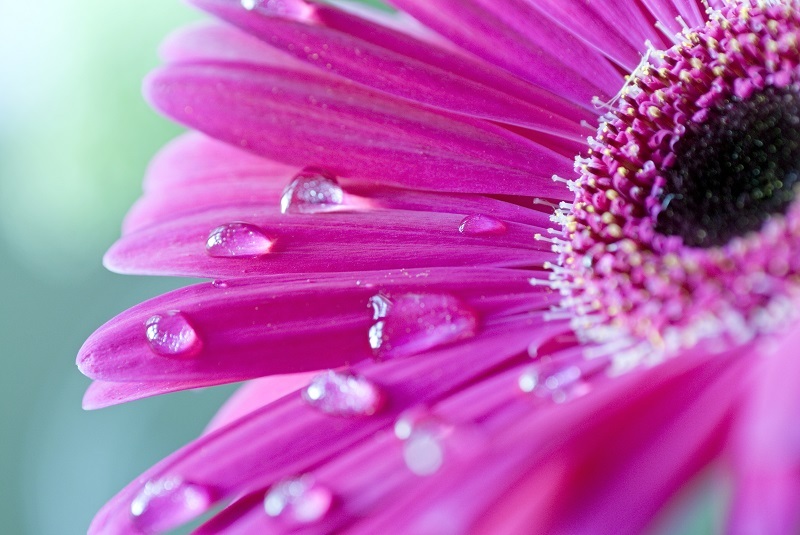The Hyacinth plant is admired worldwide for its vibrantly colorful blooms and delightful fragrance. This spring-blooming bulb is a popular choice for both garden enthusiasts and indoor gardeners. By following the right care tips, you can ensure that your hyacinth thrives and brings beauty to your home or garden. In this article, we will cover essential hyacinth plant care tips, including planting, watering, light requirements, and more.
1. Understanding Hyacinth Bulbs
Before you start planting hyacinths, it's important to understand the nature of the bulbs. Hyacinths are perennial bulbs, meaning they have a dormant period and can bloom year after year if cared for properly. When choosing hyacinth bulbs, look for large, firm bulbs that are free from signs of rot or damage.

2. Planting Hyacinths
Proper planting is crucial to ensure healthy growth and beautiful blooms. Here's how to plant hyacinths:
- Timing: Plant hyacinth bulbs in the fall, ideally 6-8 weeks before the first frost. This gives them enough time to establish roots before winter.
- Location: Choose a well-draining location that receives full to partial sunlight. Hyacinths prefer well-drained soil to prevent bulb rot.
- Depth and Spacing: Plant the bulbs about 4-6 inches deep and space them 4-6 inches apart. The pointed end of the bulb should face up.
- Soil Preparation: Enrich the soil with organic matter like compost to ensure good drainage and fertility.
3. Watering Hyacinths
Watering is a critical aspect of hyacinth care. Here are some tips to ensure your plants remain hydrated without overwatering:
- Initial Watering: After planting the bulbs, water them thoroughly to help settle the soil and encourage root establishment.
- Ongoing Watering: During the growing period, keep the soil consistently moist but not waterlogged. Water the plants whenever the top inch of soil feels dry to the touch.
- Drainage: Ensure the soil has good drainage to avoid standing water, which can lead to bulb rot.
4. Light Requirements
Hyacinths thrive in full to partial sunlight. Here's how to provide the right light conditions:
- Outdoor Plants: Choose a location that receives at least 6 hours of direct sunlight each day. Partial shade is also acceptable, especially in warmer climates.
- Indoor Plants: Place potted hyacinths near a sunny window where they receive bright, indirect light.
5. Temperature and Humidity
Hyacinths prefer cool temperatures, especially during the growing season. Ideal temperature ranges are:
- Outdoors: Hyacinths are hardy and can tolerate cold temperatures. They require a cold period to bloom, making them perfect for temperate climates.
- Indoors: Keep indoor hyacinths in a cool room with temperatures around 60-65?F (15-18?C) to prolong their blooming period.
Humidity is generally not a concern for hyacinths, as they prefer moderate to low humidity levels.
6. Fertilizing Hyacinths
Feeding your hyacinths will encourage robust growth and vibrant blooms. Here are some fertilizing tips:
- Before Planting: Incorporate a balanced, slow-release fertilizer into the soil at the time of planting.
- During Growth: Apply a balanced liquid fertilizer every 2-4 weeks during the growing season for outdoor plants. For potted indoor plants, fertilize every 6-8 weeks.
Pros and Cons of Growing Hyacinths
Like any plant, hyacinths have their advantages and disadvantages:
Pros
- Beauty: Hyacinths offer stunning, colorful blooms that brighten any space.
- Fragrance: They emit a lovely, sweet fragrance that can enhance your garden or home interior.
- Low Maintenance: Hyacinths are relatively easy to care for with the correct planting and watering techniques.
- Versatility: Suitable for both indoor and outdoor cultivation.
Cons
- Toxicity: Hyacinth bulbs are toxic if ingested and can cause skin irritation, so they must be handled with care, especially around pets and children.
- Limited Bloom Period: They have a short blooming period, typically just a few weeks in the spring.
- Yearly Care: To ensure blooming each year, bulbs need proper care, including adequate chilling time in some climates.
Tips for Successful Hyacinth Care
Here are some additional tips to help you succeed in growing hyacinths:
- Deadhead Spent Blooms: Once the flowers start to fade, cut them off to prevent the plant from using energy to produce seeds. This can help improve the vitality of the bulb for the next season.
- Mulching: Apply a layer of mulch around your outdoor hyacinths to help retain soil moisture and regulate temperature.
- Avoid Overwatering: Always check soil moisture before watering to avoid overwatering, which can lead to bulb rot.
- Handling Bulbs: Wear gloves when handling hyacinth bulbs to avoid skin irritation caused by the bulb's sap.

Takeaways
To summarize, growing hyacinths can be a rewarding experience if you follow these key care tips:
- Plant bulbs in well-draining soil and ensure they have the right amount of sunlight and water.
- Provide cool temperatures, especially for indoor plants, to extend the blooming period.
- Apply balanced fertilizers appropriately to encourage healthy growth.
- Deadhead spent blooms and mulch around outdoor plants to retain soil moisture.
Conclusion
Hyacinths are a beautiful and fragrant addition to any garden or indoor space. With proper care and attention, you can enjoy their stunning blooms year after year. By understanding the planting, watering, light requirements, and fertilizing needs of hyacinths, you can ensure they thrive and bring joy to your home or garden. Remember the pros and cons and follow the given tips for the best results. Happy gardening!

